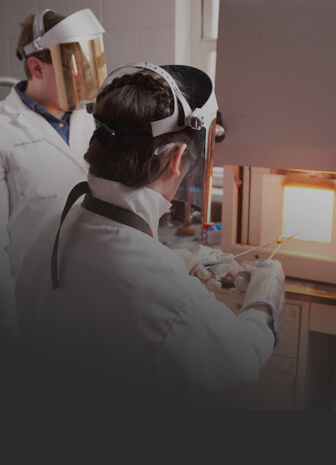The pull single crystal method is also called the Czochralski method. It is a crystal growth method established by Czochralski in 1918.
The Czochralski method is to place the raw materials in a platinum, iridium or quartz crucible, heat and melt them in a single crystal furnace, immerse the seed crystal in the liquid at an appropriate temperature, let the melt grow at the end of the seed crystal first, and then pull the seed crystal upward while rotating. The crystal gradually grows from the end of the seed crystal.

Seed crystal welding: Increase the heating power to make the raw materials completely melted, and after volatilization for a certain period of time, lower the seed crystal to the liquid surface and preheat the seed crystal for a few minutes, commonly known as “baking crystal”, to remove volatile impurities on the surface and reduce thermal shock.
Seeding: When the temperature is stable, the seed crystal can be contacted with the melt. At this time, the temperature must be controlled well. When the seed crystal contacts the melt surface and is well infiltrated, it can be slowly pulled. As the seed crystal rises, silicon crystallizes at the head of the seed crystal. This step is called “seeding”, also known as “seeding”.
Neck reduction: It means to slightly lower the temperature and increase the pulling speed after seeding, and pull a section with a diameter thinner than the seed crystal. Its purpose is to eliminate polycrystalline caused by poor contact and try to eliminate the extension of original dislocations in the seed crystal. The neck is generally longer than 20 mm.
Shoulder release: After the necking process is completed, the temperature is slightly lowered to allow the crystal to gradually grow to the required diameter. This is called “shoulder release”. When releasing the shoulder, it can be determined whether the crystal is a single crystal, otherwise it must be melted and re-seeded.
Equidiameter growth: When the crystal diameter reaches the required size, the pulling speed is increased so that the crystal diameter no longer increases, which is called shouldering. Keeping the crystal diameter unchanged after shouldering is equal diameter growth. At this time, the temperature and pulling speed must be strictly controlled.
Finishing: As the crystal growth ends, the temperature is slightly increased and the pulling speed is reduced to gradually reduce the crystal diameter. This process is called finishing.
Annealing treatment: Eliminate thermal stress inside the product body.
| Item | Name | Parameter |
| 1 | Model | DM-CGF20 |
| 2 | Power | 20KW |
| 3 | Rated Working Temperature | 1700℃ (Can Be Customized) |
| 4 | Working Vacuum | 10-3Pa (Can Be Customized) |
| 6 | Crucible Size | Ф30*100mm(Dia*H)/ (Can Be Customized) |
| 7 | Furnace Body | Ф400*600mm(ID*H) /(Can Be Customized) |
| 8 | Heating Method | Graphite Heating |
| 9 | Control Mode | SCR Power Regulation + Transformer |
| 10 | Temperature Control Accuracy | ±1℃ |
| 11 | Temperature Measurement System | Tungsten-Rhenium Thermocouple |
| 12 | Lifting Speed | 0.8-50mm/Hour |
| 13 | Pull Rod Rotation Speed | 0.1-20r/min |
| 14 | Effective Stroke | ≤300mm |
| 15 | Inflation Pressure | ≤0.15MPa |
Can Be Customized